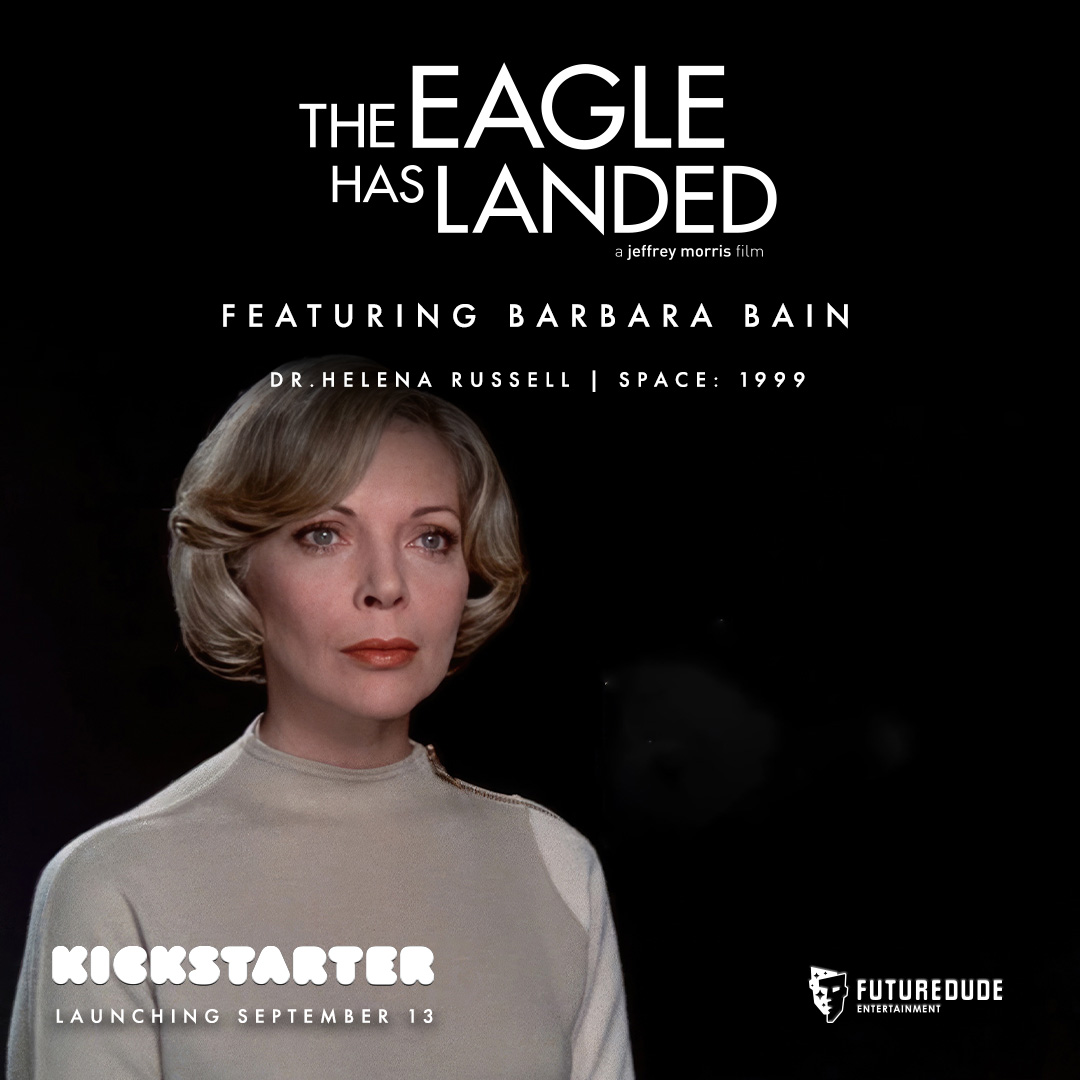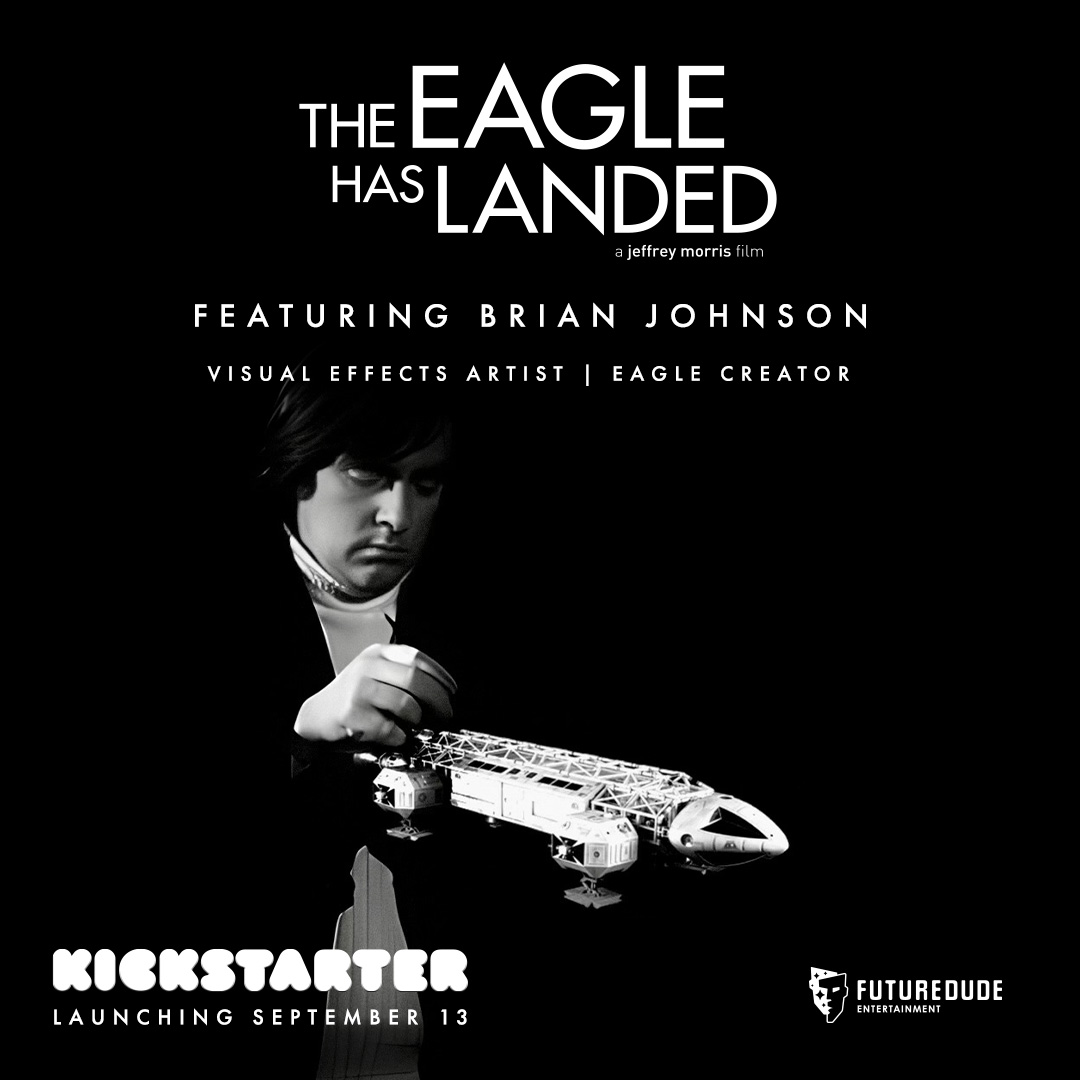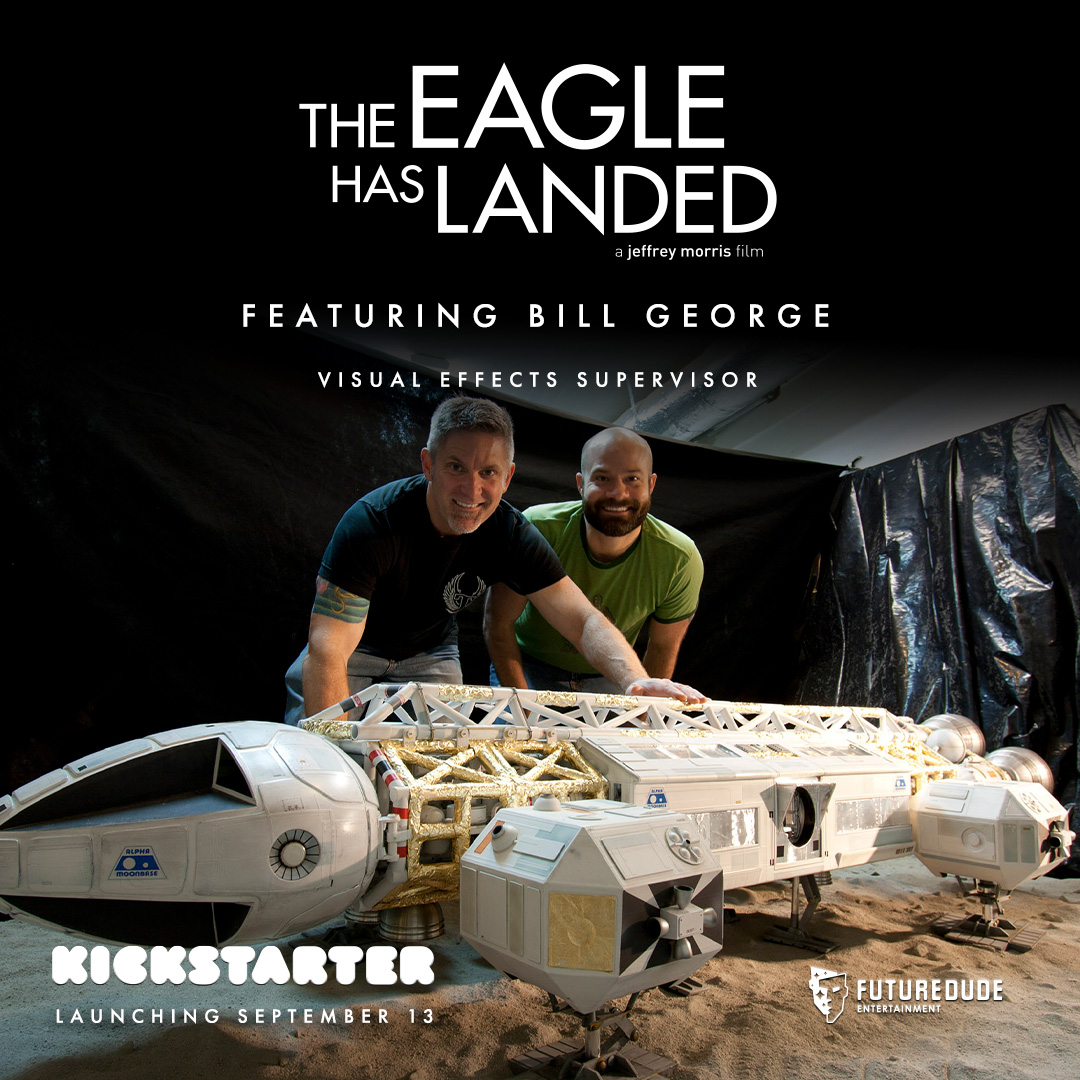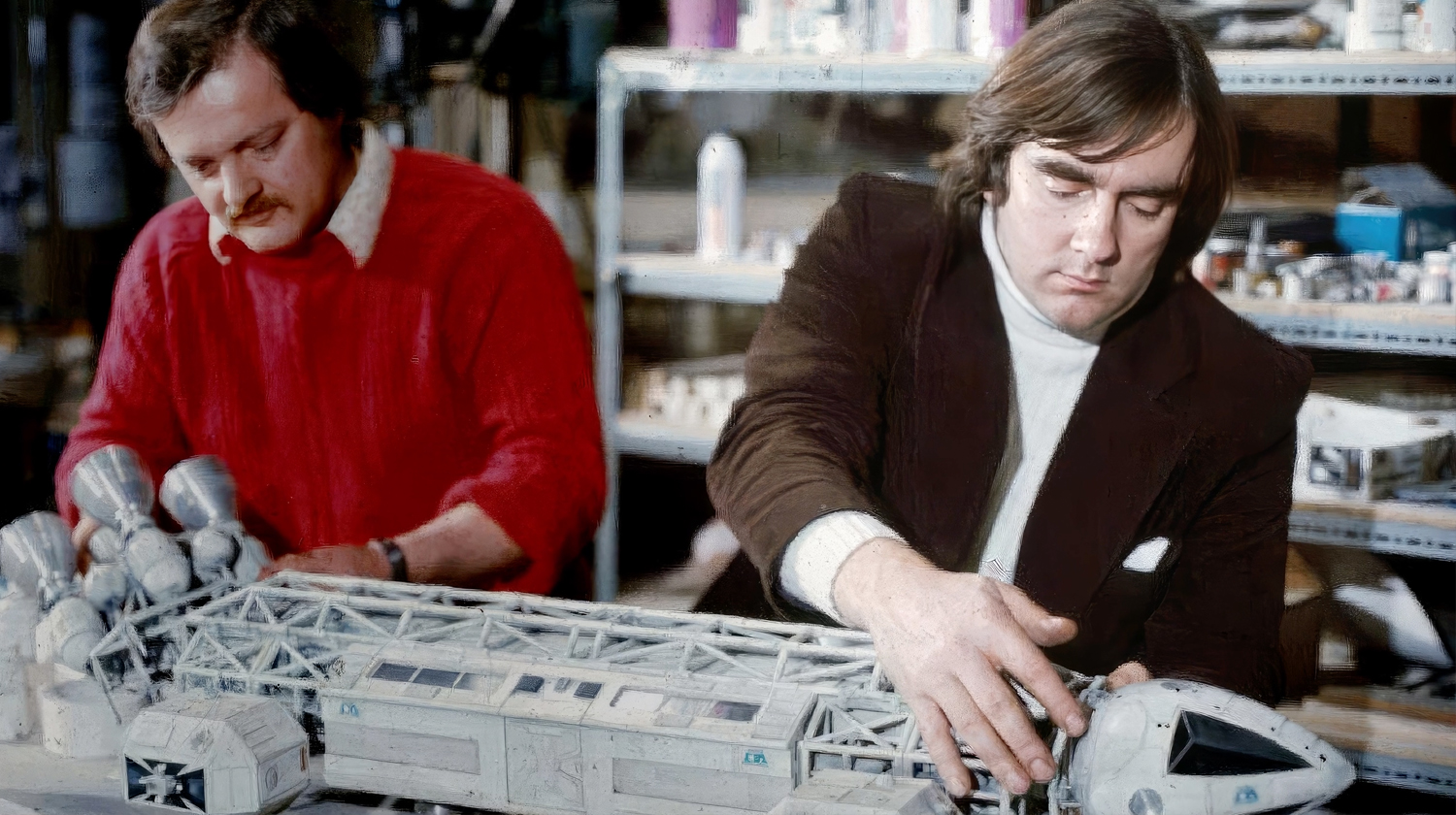'Space: 1999' documentary focusing on the iconic Eagle spacecraft launches campaign on Kickstarter
On Sept. 13, 1999, the moon was catapulted out of Earth's orbit in 'Space: 1999.' And also on Sept. 13, 2023, a crusade to fund an amazing documentary begins.
A Kickstarter campaign has been launched to raise funds for a dedicated documentary focusing specifically on the design and development of the iconic Eagle transport spacecraft from the epic 70s sci-fi TV show "Space: 1999." The documentary feature is called "The Eagle Has Landed" and will showcase never-before-seen archival footage. It's set to be released in time for the 50th Anniversary of "Space: 1999" in 2025.
"'Space: 1999' appeared on TV a few short years after the world watched Neil Armstrong take the first steps on the moon. The show's unforgettable Eagle inspired a generation to envision a future in space and is still doing so decades later. The question we explore is why?" said writer, director Jeffrey Morris and founder FutureDude Entertainment, the production company behind the project.
The show ran for just two seasons from 1975 to 1977 simultaneously in the UK and the US. It was the brainchild of Gerry Anderson, who had already given the world "Stingray," "Thunderbirds," "Captain Scarlet" and "Joe 90." He later gave us "Terrahawks," "Space Precinct" and the oft overlooked "Dick Spanner." In essence, if you were a sci-fi fan growing up in the 80s and your age starts with either a four or a five, Anderson was singularly responsible for at least half of the television shows you enjoyed. The rest of course was anything made by Irwin Allen.
Related: Best sci-fi TV shows of all time
The period of time that the show was made was a key factor in establishing its cult following. "Star Trek: The Original Series" had finished six years earlier and household VHS video recorders were not readily available yet, so we were very much at the mercy of reruns and network schedules. Much of the best science fiction being made at the time was in the cinema.
"Forbidden Planet," "2001: A Space Odyssey," "Planet of the Apes," "Silent Running," "Soylent Green" and "Logan's Run" were all released before "Star Wars" premiered in 1977 and then everything changed overnight. Suddenly studios left and right were scrambling to find every space-based script they possibly could and that included television as well as the movie theaters. Science fiction had been changed forever.
Moreover, the look and feel of "Space: 1999" was equally instrumental. While the race to the moon was over and of course no one actually bothered to go back, the memory of Skylab was still fresh in the minds of most starry-eyed space aficionados. And in particular, "2001: A Space Odyssey" had well and truly nailed space-age product design that really looked like it was current. And that was the appeal of "Space: 1999," it looked contemporary and therefore real and thus believable. And a huge part of that, was the design of the Eagle, Moonbase Alpha's multi-role workhorse.
Breaking space news, the latest updates on rocket launches, skywatching events and more!





It's sleek lines and practical considerations have ensured its place in the Sci-Fi Spacecraft Hall of Fame. One even made a cameo appearance in the "Red Dwarf" episode "Psirens" (S06, E01). Brian Johnson, who was the original designer of the Eagle, will be a very big part of the documentary. Along with "Space: 1999" he has impressive list of film and television credits, including "The Empire Strikes Back," "Alien," "Dragonslayer" and "Aliens" to name just a few. He spoke exclusively to Space.com.
"My initial design for the Eagle was based on experience with dressing the Moonbus on '2001.' Adding little bits of plastic kits made me sketch an alternative craft based on the Moonbus. I added a frame on the top using the Maserati Birdcage steel tubing principle," Johnson said, adding, "Just a few sketches which I binned a few days later. Then when Gerry asked me to do 'Space: 1999' and I got the first script, the redesigned Moonbus started my grey matter pumping away. Derek Meddings having moved on to Superman/Bond time was why I was offered the job.
"My original Eagle sketches had a cockpit 'beak' ahead of a passenger/freight cabin with rocket clusters at the rear. I added four fuel spheres, one at each corner of the cabin including retractable undercarriage legs. Later I made the fuel spheres into faceted items just because it seemed 'right' to me," Johnson said.
"Then I borrowed Michael Lamont from Keith Wilson’s art dept to turn my crude sketches into 3-view drawings for Space Models at Colnbrook [in Slough, UK] to build the first 44-inch Eagle, then a 22-inch and 11-inch followed," Johnson said, adding, "As far as I remember Gerry and Sylvia saw nothing until the first 44-inch appeared. Keith had seen the 3-view drawings. I guess Gerry must have seen those too, but never said anything."
Morris describes himself as a lifelong space and science-fiction enthusiast. His independent production company is responsible for the forthcoming live-action films "Persephone," "Oceanus" and the animated series "Parallel Man."
"That's exactly why I love this," he says. "Because for me there are aspects of the Eagle that that directly translated from the NASA vehicles. If you look at the reaction control thrusters that are on the lunar module and on the CSM and things like that, well, they had that on the Eagle. This was like the grandchild of the lunar module.
"Star Trek was set nearly 300 years into the future, this felt like a direct path between where we were and where 'Space: 1999' was. Sure, blasting the moon out of orbit and exploring planets every week could be a bit of a stretch," Morris laughs, "But the spacecraft, the costumes, they looked like they could exist in just a few decades, very easily. And the Eagle was the personification of that and that's why so many people love and enjoy it. You know, I've meet people who are Eagle fans and they don't even like the show. And that's really interesting."
The campaign aims to raise between $500,000-$1 Million over the next 35 days. The documentary feature, which also showcases never-before-seen archival footage, is set to be released in time for the show's 50th Anniversary in 2025.
Numerous rewards will be provided for donation amounts in multiple increments starting at $5 through $10,000 with the highest contribution receiving an IMDB Executive Producer credit. Other packages include:
• Dinners with actor Nick Tate, who played pilot Alan Carter, in Los Angeles and Eagle designer Brian Johnson in London, each for a $2,500 donation
• Gorgeous models of the Eagle transport
• An IMDB Associate Producer credit ($5,000)
• An IMDB Co-Producer credit ($7,500)
• Lower-priced donations will score photos, an Eagle replica, posters, signed photos, soundtrack and more.
The Kickstarter campaign is now live and the link is here.
"I'm thrilled that recently we were able to attach legendary actor Barbara Bain to the project. Her inclusion will ground the film with a sense of unprecedented depth and history. I'm also excited that ITV Studios — owner of 'Space: 1999' — has signed off and given their blessing for the project," said Morris.
"As a small child, I never would have believed that nearly 50 years later, I would be directing and hosting a film about the greatest sci-fi spaceship of all time. It's unbelievably exciting and a tremendous honor."

When Scott's application to the NASA astronaut training program was turned down, he was naturally upset...as any 6-year-old boy would be. He chose instead to write as much as he possibly could about science, technology and space exploration. He graduated from The University of Coventry and received his training on Fleet Street in London. He still hopes to be the first journalist in space.


